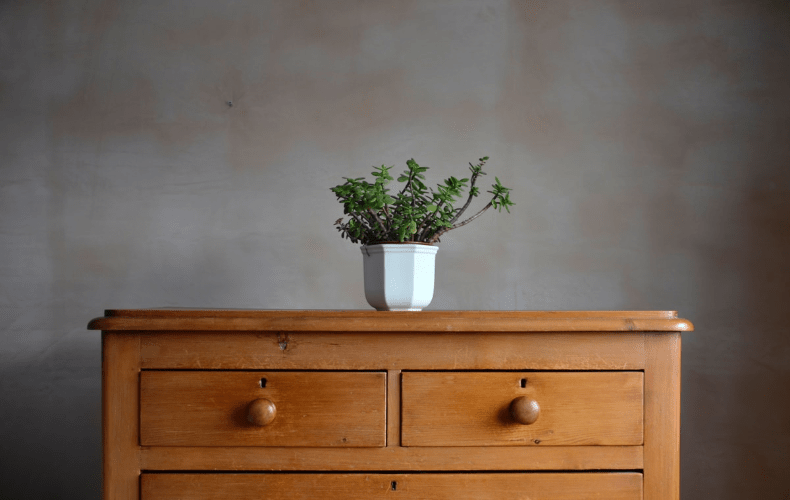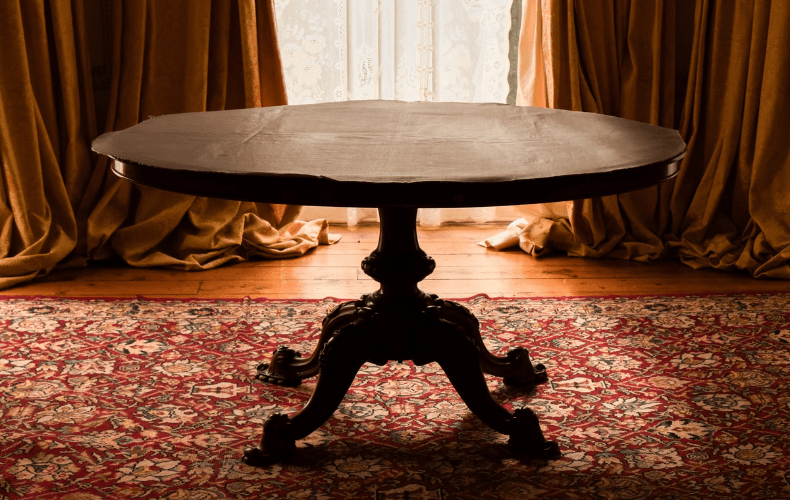Content: 798 words
Reading time: 2 min 54 sec
Article by: Ryan Thomas
We all have old bits of wooden furniture we love and want to keep. But sometimes this old furniture isn't in the best of condition.
Luckily, it's very easy to make improvements so it matches your other furnishings. It's not difficult to learn how to paint wooden furniture.
Done properly it will blend in completely unnoticed. If you follow the simple steps below you can make your old furniture look brand new.

My Favourite Paint For Painting Wooden Furniture
Here are three popular paints you can use on wooden furniture. They are emulsion paint, chalk paint and gloss paint.
If you're not bothered about the finish, pick the paint that's easiest to use. Chalk paint has a reputation for not needing any prep work or primer. It will save you time especially if you have a lot of furniture to paint.
However, for best results, I highly recommend some prep work before using any type of paint. Sanding is a must if you want to hide dents, chips and rough edges. The small orbital sanders are perfect for sanding furniture.
And, you should wash all items down with a mixture of detergent in warm water. This will remove any grease or oil marks from contact with food and hands.
Before you start coating your furniture always read the manufacturer's instructions. They will tell you if a filler, primer, undercoat or sealer is required.
Personally I use chalk paint as it gets the job done with a minimum of fuss. You may have to seal it but what the hell, it still gets the job done quicker.
Prepare To Start Painting
Before you start you will need to set up a space to paint. A well-ventilated room, shed or garage with the door open is best. Better still, why not paint outside if you have the right weather conditions.
An old table or workbench would be perfect as a worktop for painting. Either one will enable you to raise items to a suitable working height. And, they will be big enough to support most items of furniture.
Having the right safety kit is also essential. You will need safety goggles and a respirator to protect you from paint fumes. Even outside you can get a mouthful of fumes if the wind changes.
As an added precaution you can use a spray shelter. They are good at keeping the paint confined to a small area. A shelter will stop any spray getting onto other unintended items. You can buy them in several sizes so pick the one most suitable for you.

The Best Way To Spray A Chair
At this point, you should be ready to start spraying. Keep in mind that you should aim for even coats.
Don't hold the can too close or you could end up with paint runs. Ideally, about 10 inches from the chair would be perfect.
You can spray up and down or side to side as you go. Apply thin even coats and make sure they overlap. Cover as much of the chair as you can then leave it to dry.
But first, work your way around the chair looking for missed areas. If you find any, spray them in then move on and look for more. Once you're sure the chair is fully covered let it dry.
When the chairs dry, pick it up and turn it over. You will now be able to spray the areas you couldn't reach before.
If you've decided to use one coat of chalk paint make sure there are no misses. And, spray over areas where the paint has barely covered the wood.
Putting On The Final Coat
If you decide to use an emulsion or gloss paint a sealing coat will not be required. On the other hand, if you use a chalk paint a sealing coat should be used.
A sealant can be sprayed from a can or put on with a brush. Spraying is quicker and less messy so I use a spray tin sealant. Make sure you apply a good even coat.
Be as generous as you like but look out for runs. After giving it one final inspection let it dry. Leave it to stand for 24 hours to get the perfect finish.

Now It's Your Turn To Paint Something
By following the steps above you should now know how to paint wooden furniture. Not only that but you should also know what's the best type of paint to use.
Painting furniture is so easy it's well worth doing. You can quickly turn an old piece of furniture into a new piece of furniture. But why stop there, with the right tools you could paint the house.
Restoring instead of buying will save you money and benefit the environment. Most people have furniture that could do with some 'tender loving care' - what about you?